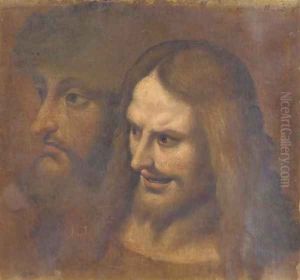Bartolommeo Passarotti Paintings
Bartolommeo Passarotti was an Italian painter and draftsman who played a notable role in the Mannerist school of Bologna, a key artistic hub during the late Renaissance. Born in 1529 in Bologna, Passarotti was deeply influenced by the robust intellectual and artistic climate of his hometown. He initially trained under local masters before embarking on a journey to Rome, where he furthered his studies and was profoundly influenced by the works of Raphael and Michelangelo. His early works reflect this inspiration, showcasing a blend of classical harmony and Mannerist complexity.
Upon returning to Bologna, Passarotti became a pivotal figure in the city's artistic community. He was renowned for his religious and mythological paintings, portraits, and, notably, his genre scenes, which were somewhat innovative for their focus on everyday life. His style is characterized by precise draftsmanship, vibrant coloration, and a keen attention to detail, elements that distinguished his works from those of his contemporaries. Passarotti was also known for his skill in fresco painting, receiving commissions for decorative schemes in churches and palaces throughout Bologna.
One of Passarotti's significant contributions to the art world was his role as a teacher. His workshop attracted numerous students, and he played a crucial role in the development of the Bolognese School of painting, which would later include luminaries such as Guido Reni and Domenichino. Through his teaching, Passarotti emphasized the importance of drawing from life, a practice that would become a hallmark of the Bolognese School.
Throughout his career, Passarotti remained engaged with the intellectual and cultural circles of Bologna, contributing to the city's reputation as a center for artistic innovation. His works were celebrated for their inventiveness and technical prowess, earning him a lasting place in the history of Italian Renaissance art. Bartolommeo Passarotti died in 1592 in Bologna, leaving behind a legacy that would influence generations of artists in Italy and beyond.
